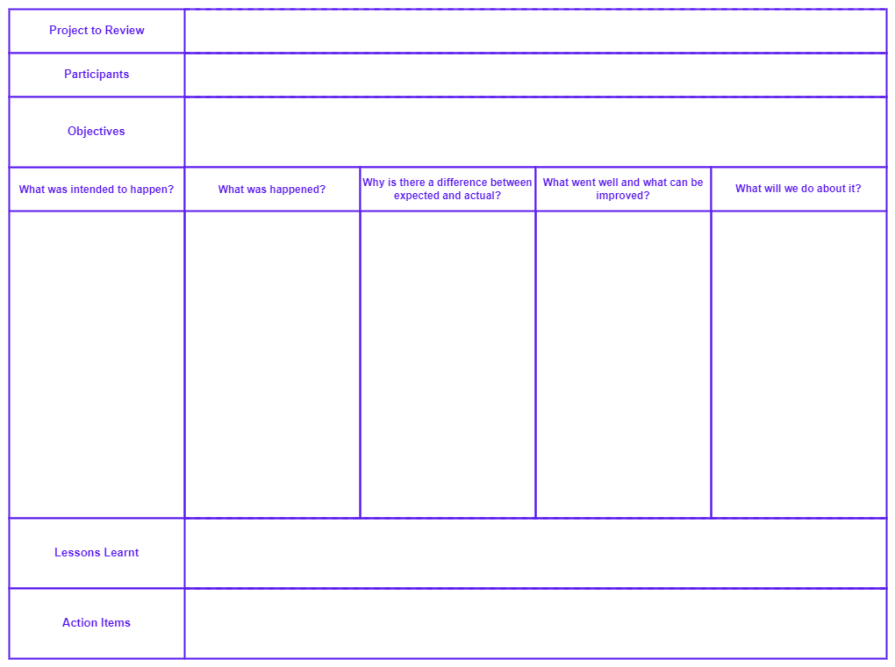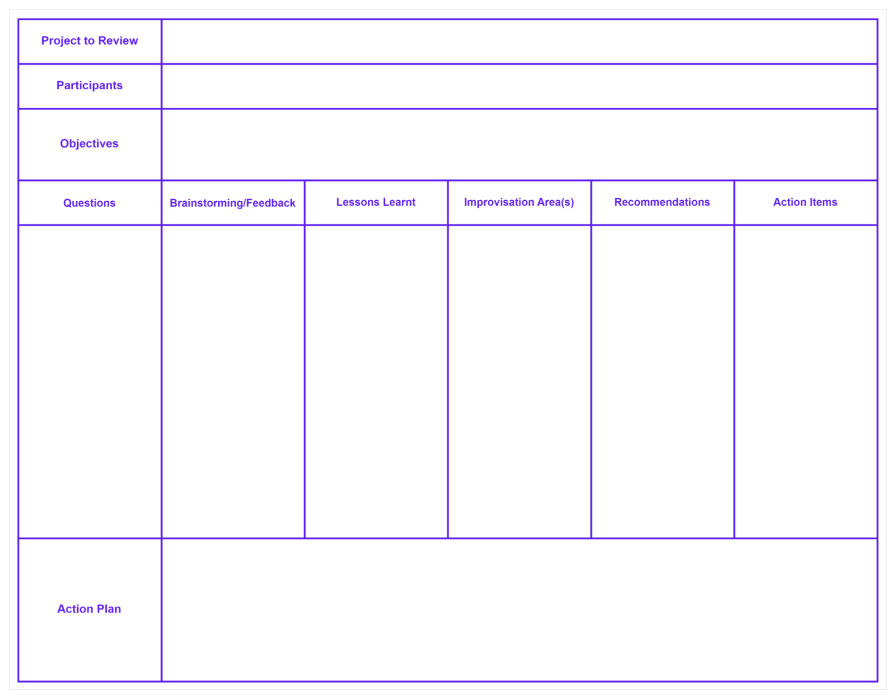During the 1970s, the U.S. Army wanted more collaborative and constructive methods to learn from previous combat and training where the soldiers were interviewed after combat or commanders would pass on performance feedback in the form of critique. These methods tended to produce defensiveness and hampered learning.

To address this, the U.S. Army developed a formal process of continuous learning: after-action review (AAR). The focus was on emphasizing participation from all involved, encouraging open discussion, and identifying areas for improvement rather than blame.
The U. S. Army conducted AAR immediately after every combat and soldiers closely involved in the task or operation would take part in discussing:
This helped the soldiers understand the tactical and strategic decisions made during the combat, learn from the mistakes, and build adaptability and preparedness for any situations or scenarios that come across them.
In this article, you’ll learn more about what an AAR is, how it moved into the corporate world, and how you can implement it within your product team.
As alluded to in the introduction, an after-action review refers to the process of conducting an in-depth study of an event after the fact, focusing on continuous learning to understand why what happened happened and how it can influence the future.
During the 1980s, when the U.S. Army formalized and standardized AAR by documenting the guidelines across the military, AAR spread into other sectors too, especially healthcare institutions, ever-changing businesses, and those administrative services where emergency response teams operated.
AARs conducted can be of two types:
AARs can also be event-driven where the focus is on dissecting the event outcomes or process-driven discussing the workflows or inefficiencies in the process.
After identifying the task/event for AAR, there are four components in conducting AAR:

Within the process of an after-action review, the participants can ask and answer any number of questions that facilitate continuous learning and preparedness for the future. However, any AAR should record answers to the following five critical questions:
Many similar approaches to AAR have been adapted by various industries. They have subtle differences in the purpose, formality, and approach to the process of conducting them. Let’s talk here about the most popular ones:
| AAR | Retrospect |
| Usually, narrowed scope of a specific event, task, or operation | Wider scope, mostly on the completion of certain milestones, sprints, and projects |
| Narrow focus towards recent experiences and lessons learned from them | Wider focus on overall process and improvement |
| Ideally conducted immediately after the task, event, or operation. Mostly reactive conducts | Done as a periodic celebration at regular intervals. Need not be for an event and is mostly a proactive improvement method |
| Mostly formal with structured discussions usually followed with a template | Formal but informal to keep it adaptable, open, and build an environment per the needs of participants |
| AAR | Post-mortem analysis |
| Has a broader scope, considering the sequence of events, and activities | Narrow scope analyzing particular failed events or outcomes |
| Focus on learning all experiences; successful or failures. Goal to improve future actions | Focus on analyzing the cause for mostly negative outcomes or failures |
| Ideally conducted immediately after the task, event, or operation. Mostly reactive conducts | Conducted after some time has passed to allow for a more comprehensive analysis |
| The tone of the environment is forward-looking and positive, aiming to create space for open and honest discussions | Critical and analytical environment, dissecting the mistakes and responsibilities held. The goal is to create serious accountability |
Once the scope is defined and objectives are clear, the next step is to assign a facilitator, finalize the venue and time, and inform/invite every participant. Consider also assigning a note taker or recorder (if provisioned) in place during the AAR meeting.
Then, secure all the information and resources needed like a place to meet, recorders, stationeries, documentation about events/operations, etc. Once you do this, the following steps guide the AAR meeting:
After the AAR meeting, the next step is to follow up on the action items tracking their progress and ensuring getting them done. Do periodic check-ins to review progress, address any challenges or barriers encountered, and provide support as needed.
When conducting an AAR, it’s important to avoid the following:
You help you get started, here’s a simple template that covers all the basics that you should include in an after-action review:

The above template is sufficient for many smaller projects, tasks or operations, but if someone wants more detailed, complex bindings covered between cases/situations, one can use the following template:

An after-action review is a powerful tool for you to analyze past events, identify lessons learned and improvisation areas, draw action plans, lead continuous improvement, and cash in better overall performance. AARs can be performed formally with larger groups for sizable projects and can be performed informally within small teams for smaller tasks, events, or operations.
AARs are about fostering a culture of learning. It’s important to set up a comfortable environment that encourages open communication and honest feedback. Avoid blaming, dominating discussions, or disrespecting/ignoring feedback to ensure the success of the review process. Execute a balanced discussion; acknowledge both successes and shortcomings, and translate learnings into actionable steps.
With continuous practice, AARs can become a cornerstone of your team’s health, growth, and consistent performance leading to organizational growth and success.
Featured image source: IconScout

LogRocket identifies friction points in the user experience so you can make informed decisions about product and design changes that must happen to hit your goals.
With LogRocket, you can understand the scope of the issues affecting your product and prioritize the changes that need to be made. LogRocket simplifies workflows by allowing Engineering, Product, UX, and Design teams to work from the same data as you, eliminating any confusion about what needs to be done.
Get your teams on the same page — try LogRocket today.

Most teams fail at autonomy. Learn how clear rules help product teams move faster without micromanagement.

A practical framework for PMs to use AI in ideation without sacrificing judgment, strategy, or decision quality.

A practical five minute revenue estimation method to help product managers compare ideas, drop low impact features, and prioritize smarter.

A practical guide for PMs who want to stop being bottlenecks, delegate smarter, and lead teams effectively with a clear ownership framework.